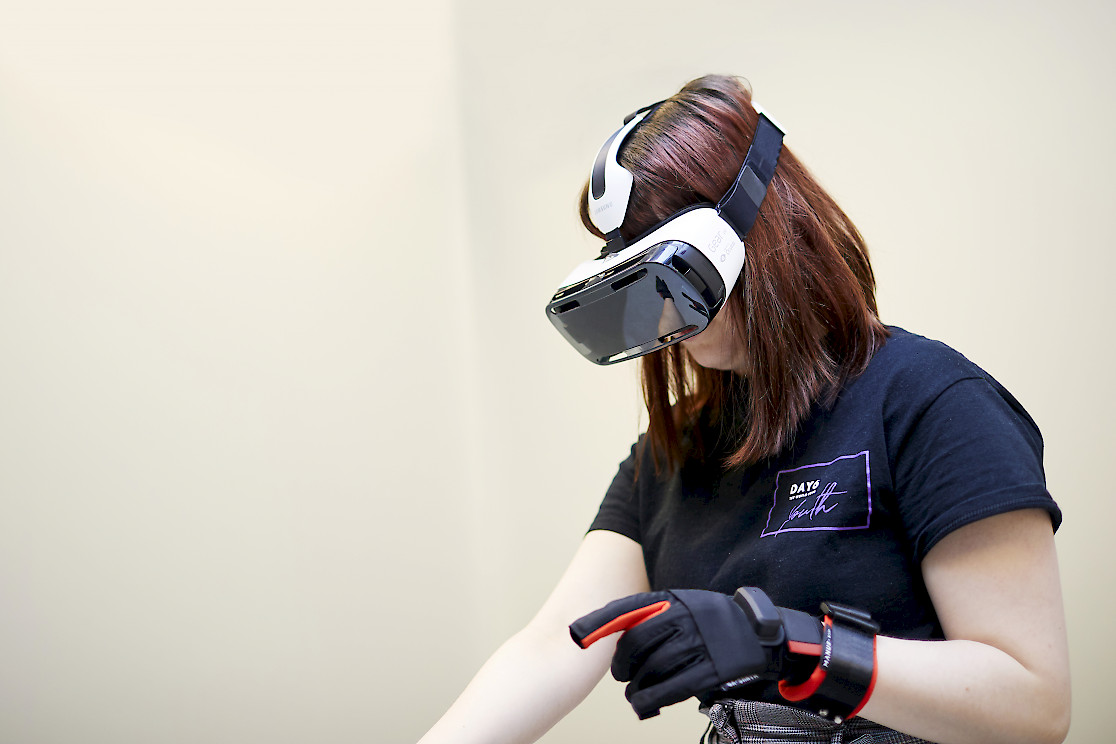Improving efficiency in design, production & maintenance
 Is VR commonplace?
Is VR commonplace?
VR developed in a few years from 'the next frontier' to daily application that we all know. Think of movies and games, but also in webshops where you can try out how clothes look on you or how furniture fits in your living room. A few years back, Fontys Hogeschool ICT performed the 'pioneering' work with the technology, Verwaaijen explains: "We have been exploring the possibilities of VR for a long time. When it made its appearance, we worked with all the big tech companies in the region to explore applications. Now our role is shifting." Many larger companies now have their own VR teams. The technology has matured.
Smaller error rates and better maintenance in SMEs
Yet that is not to say that virtual reality is "ready" as a research field for practical applications. According to Verwaaijen, there is a lot of development: "VR is widely used for training and simulation. The technology is now much more accessible, which means that there are a lot of opportunities, especially in SMEs." The cost threshold becomes lower with an established technique, making the investment more interesting for smaller organisations. In addition, there are new developments that are particularly valuable for specific supply chains, such as the concept of 'digital twins': "By making a digital reproduction in VR, processes such as assembly, interventions, design adjustments or customization can be explored. This reduces error margins in production, but can also help in product development and preventive maintenance."
Partner in VR prototyping
In recent years, Fontys University of Applied Sciences ICT has worked on various prototypes in the field of VR. Herein lies the added value of the knowledge institute as a partner with broad expertise. In a unique way of working, students and researchers work together on applied research questions from the business world, which results in broad knowledge development. The projects below show the broad possibilities that VR has to offer.
Project 1: Anesthesia/Operating Room
Both applications were developed to provide healthcare students with an immersive training experience. The goal is to prepare the operating room and perform a number of procedures, to which the user is subjected 'at random'. Eventually, students will have to enter the real operating room, but VR training helps to get them ready to follow procedures and perform fixed actions. In Operating Room, a surgeon gives the student feedback in the VR environment, to complete the experience.
Project 2: Saasen Group OnScene Design Challenge
In this application, too, the goal is to train emergency response personnel in an emergency situation, but with a mixed reality element. Verwaaijen: "The goal is to provide a learning experience that, although free of risk, feels real. VR is ideally suited for that." In 'first responder' situations, stress management is an important factor. The existing application was brought to Fontys students for improvements in the immersive nature (essential to bring about the feeling of stress) and the measurability of the stress level. The former was achieved through design improvements in the interaction, but also by adding mixed elements, such as a physical fire hose and lifting someone up. The stress level is measured with smart algorithms, but also by measuring the biofeedback of the user. All of this has also been extensively tested.
Project 3: Noldus Information Technology Eyetracking
Testing techniques and scenarios can also be made easier with virtual reality. Noldus Technology developed an eye tracking tool, which they wanted to test in a VR environment. Students developed this environment, by designing an abstract and realistic scenario, in which the measured eye tracking could also be linked to 3D elements in the scenario. This not only tested the algorithm, but also fed it with more data.
The Virtual Reality Lab is located in the InnovationLab at Strijp-TQ. Want to know more about projects and possibilities that VR has to offer? Please contact Sjaak Verwaaijen.